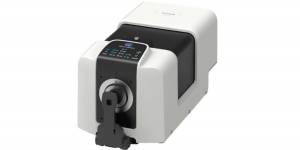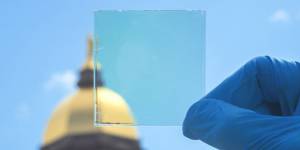![]() What we see as the color of an object or a surface is the characteristic of the material that composes it. Know the main concepts to take into account when making a good color measurement.
What we see as the color of an object or a surface is the characteristic of the material that composes it. Know the main concepts to take into account when making a good color measurement.
It is difficult to try to explain what color and visual appearance is, as measured today and what awaits us in the future, in a magazine article. There are those who will ask how is color measured? What do they call "visual appearance"? When one sees on television the commercial, on TV, of the Argentine firm Tersuave that mentions the colors with fantasy name such as celestial sky, sea green or black Lavié, it identifies colors that everyone in Argentina knows by name, but no one can truly identify. In the same way that when the country man tells us about the distance to the market and tells us: aicito no more, and it is not enough for us. We want them to tell us if 5, 10 or 20 "blocks", or if it is Kilometers. We need to know how much, not just whether it's a lot or a little.
Although most people do not know it, color as a part of all visual appearance phenomena, can be measured, although not in the classical sense of measurements, such as distance or coins. The fundamental problem presented by these phenomena is that the instrument of measurement is the human being through his senses and his mechanism of cerebral interpretation of reality.
In order to quantify these magnitudes, it is studied how the human being evaluates such magnitudes and for this purpose physiologists, psychologists, biologists, physicists, mathematicians and philosophers intervene who try, sometimes successfully and sometimes not, to understand the sensory mechanisms that produce the quantification of visual sensations.
The problem is complex and is studied since the beginning of civilization, although only in the renaissance with the appearance of a genius like Isaac Newton began to give a scientific content to the problem.
Many are the names of those who from their vision (worth the redundancy) studied and contributed ideas about how we see reality. Thomas Young, Wolfgang Göethe, Ewald Hering, Ludwig von Helmholtz, James C. Maxwell, William D. Wright, Ives LeGrand, David L. Mac Adam, Dorothy Nickerson, Deane B. Judd, Richard Hunter, among many who mark the history of colorimetry and the measurement of visual appearance.
We will not try here to illustrate how color and visual appearance are measured, we will only talk about how the studies related to their measurement are today and that the future presages us.
Color
In the beginning it was light, that electromagnetic radiation that is capable of exciting the retina of the human eye. Only a very small part of the entire electromagnetic spectrum that goes from radio waves to cosmic radiation, is able to be detected by the human eye that we call visible spectrum and that goes approximately from 380 nm (1 nm = 10-9m), at the violet end, to 770 nm at the red end. On both sides is the ultraviolet (UV) and infrared (IR), respectively.
In the human eye there are three types of detectors (the cones), which transform these electromagnetic stimuli into visual sensations of color: One blue, one green and one red. The initial signals are processed by the visual system and conducted by the optic nerve to the optic chiasms where the right and left part of the visual field are derived and conducted to the external geniculate body where they are transformed into antagonistic red-green, yellow-blue and dark light signals.
From there they travel to the visual cortex, where they are transformed again into knowledge and recognition, phenomena in which memory and consciousness intervene. It is a complicated and complex phenomenon, of which only a few instances are known. There are still many questions to be resolved.
Psychophysics studies methods for assessing the psychological response to physical stimuli. Visible electromagnetic radiation, light, is a physical stimulus that produces visual sensations and has been studied with various psychophysical methods, one of which is to ask an observer to match a certain color with the sum of three primaries in adequate quantities and this has allowed to determine the average for a small number of observers of the necessary amounts of stimuli to match all the colors of the electromagnetic spectrum.
Thus today, by measuring the visible electromagnetic spectrum, it is possible to predict how it would be seen by humans. This is what tristimulus and spectrometric colorimeters do. Tritegulas are those who use three or four filters pretending to do it as our eyes see. Spectrometrics are those that quantify the spectral radiation and, by electronic and mathematical means, the quantities of the primary colors necessary to match the color of the analyzed spectrum are calculated.
Both instruments provide three basic values that constitute the numerical identification of color. To quantify colors, the CIE (International Lighting Commission) has created two systems to measure and represent color; the XYZ of 1931 and the L*a*b* of 1976, better known as CIELAB. Figure 1 shows the CIELAB color space
It can be seen in the figure that the CIELAB system is based on a system of opposites, where the axis a*, corresponds to red, and its opposite, the –a*, to green, the b* to the yellow and the –b* to the blue, being the 0 a neutral color, a gray between white and black.
Modern instruments make it possible to measure color in L*, a*, b* or L*, C* and h don of C* is the radius vector from the center of coordinates to the point that represents the color and h is the angle that forms the radius vector with the axis of absisas (a*) (Figure 2)
Instrument requirements
Current instruments that measure color are based on two fundamental geometries: using a geometry 45/0, or its inverse 0/45, and using an integrating sphere (d/8° or d/0°). What it is about measuring is the color, so the polishing of the surface, whether it is shiny or not, does not matter.
We will analyze later other forms of appearance, but it is important to note that what we see as the color of an object or a surface is the characteristic of the material, regardless of how its surface is finished. At least as far as color is concerned.
When one tries to describe the requirements that an instrument should have to properly measure color, the following points could be mentioned: geometry, lighting, optical design, sample size, calculation program, behavior and errors and cost. Each of these aspects would require a particular analysis. For example, if one or the other geometry is used, see what the advantages are in each case and for what type of samples is the most convenient geometry.
It is not the same to measure plastics than automotive paints, water paints than silk fabrics. Each case requires a particular study. The example of food is very demonstrative. Meats, honey, flour, bread, fruits, jellies, peas, olives, tomatoes or juices, have unique characteristics that require specialized measurements and not just any instrument can measure them properly.
The key is always in the training and care of those who have the responsibility to perform these tasks, but even so, it often requires the advice of the specialist or some development and / or investigation of the specific problem. There are no people who know everything about everything, but some who know a little about something.
It may be that those who have the responsibility of authorizing the purchase of one of these instruments do not wish to spend on developments or research and abide by the advice of friendly sellers who will make them believe that their products are good for everything. When this is not the case, the result is going to be an investment that may not be right for the task you need to perform.
When the choice is the right one for the purpose pursued and you have an appropriate instrument to perform the intended task, we must remember a maxim of Max Saltzman who was co-author with Fred Billmeyer, of one of the best books on color technology (Principles of color technology, Wiley, NY, USA, 2000, 2nd Ed.), "If one gives an idiot a good instrument, will get idiotic results", on the contrary, a poor instrument in the hands of someone intelligent, will get results limited by the same, but intelligent.
One of the characteristics of new instruments on the market is their tendency to miniaturize. Unfortunately, this can be technologically very impactful, but the size of the samples may imply that it is necessary that the measurements of the samples correspond to areas large enough to represent a visual field related to those it controls.
If you have an opening of 1 cm it is difficult for the measurement to be representative of the color of the surface of the paint of a car or a fabric, at least it should be 25 mm. Conversely it would be very large if one wants to measure the color of dental prostheses, where the size should not exceed a couple of millimeters.
Measurement
The detector "arrays" began with about 20 in one line, from 16 to 32, 64, 128, 256, 512, 1024, 2048, 3070 and today there are 4096. How many will arrive in the future?, it is somewhat unpredictable, but for a spectrum ranging from 300 nm (UV-C ranges from 100 to 280 nm, UV-B from 280 to 315 and UV-A from 315 to 380 nm) to 800 nm, they imply 500 nm, with an arrangement of 512 elements would allow to separate the spectrum each nm, if you have more than 4000 it is almost possible to separate that spectrum almost every Amstrong or tenth of a nm.
Is it useful, is it necessary? It is not necessary, nor does it work, because although the functions that characterize the Colorimetry Pattern Observer are defined every nm, the human eye is not able, in almost the entire spectrum, to differentiate a monochromatic radiation from another that differs one nanometer in the wavelength. Higher resolution means nothing visually. On the other hand it is easier and faster to process a smaller number of signals, because as we will see elsewhere the processing of the information of the visual image carried out by the human brain is very complex.
Therefore, a spectrometer that has an array that has between 128 and 512 detectors is, perhaps, the most suitable for measuring color. The problem with miniaturization is that, normally, these spectrometers have the input through optical fibers, introducing a new technique that requires different care than those applied in conventional optics.
Finally, it should be noted that with the appearance of light-emitting diodes (LEDs), some instruments use them as monochromatic light sources of more or less narrow band and, in this way, measure along the visible spectrum, with seven, nine or more monochromatic lights and interpolating the results.
Although the new sources are much more durable and stable than the traditional incandescent lamp, the fact of interpolating the entire visible spectrum taking as a reference a white pattern, leaves the doubt of its accuracy, particularly when the color has very defined bands as in the cases of yellows, oranges and reds or when it is a very selective color. In these cases the error could be significant and it is necessary to properly verify its behavior and calibration.
On the other hand, this routine should not only be recommended in this case, but should be extended to all instruments, without exception, to ensure their correct use and the benefits they must provide.
We will continue to talk about these and related topics, in particular those related to other topics related to visual appearance such as cessia and spatiality, brightness, matting, translucency, clarity, "orange peel", image definition, micro appearance with its flashes and granulosity, goniochromatism with metallic, the pearl and the iridescence and finally the texture.
* Degree in applied mathematics. Tecnología del Color S.A.
[email protected]
























Leave your comment